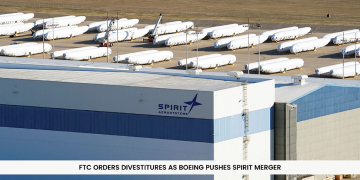The semiconductor industry is going through a major transition right now, and this is being reflected in the increased demand for creative and sustainable solutions. Forefront RF Ltd., a fabless semiconductor company headed by CEO Ronald Wilting, is at the forefront of spearheading this change.
Founded in 2020 with the distinctive objective of creating a sustainable RF component business that makes smartphones, wearables, and other mobile devices simpler to design and globally accessible.
ForetuneTM Technology can significantly reduce the total bill-of-material (BOM), increase the number of RF bands it supports, and drastically minimize the amount of PCB space needed. Their unique technology, when integrated into a small module, empowers OEMs to replace existing modules (that are only able to support a limited set of frequency bands) with a frequency-agnostic solution that can be dynamically changed based on its environment and/or available frequencies.
The Man at the Helm
Ronald embarked on this remarkable journey as a design engineer, like many other executives in the semiconductor industry. He soon gained recognition for his unique organizational and managerial skills.
Over the last 30 years, the magnificent man has held senior roles with several renowned organizations in the semiconductor space, including Ericsson, NXP, EPCOS, and Qualcomm. He holds great interest and expertise in turning early-stage technology concepts into mass-market solutions. The development of the close-loop antenna tuning solution during his EPCOS years is a prime example, which resulted in a new RF component in the radio front-end, a market now worth over $1.5 billion.
He joined Forefront RF as a consultant to assist in establishing the company’s product and technology strategy. In June 2022, he became CEO to spearhead the next phase of the company’s growth.
An Edge Over the Peers
Forefront RF Ltd. is a burgeoning and exponentially growing enterprise in this segment. As the only chip manufacturer to create a complete mobile radio front end with tunable duplexer technology that is customizable based on available frequency bands, the company has carved out a niche by overcoming PCB size limitations. The following are the key differentiating factors that make the company stand out:
- They are the only firm with the expertise to use self-interference cancellation techniques to reduce undesired RF interference on mobile devices. It is the only company with the know-how to leverage self-interference cancellation techniques to overcome unwanted RF interference on mobile devices. Due to limited PCB space, current processes are component-heavy and unviable in the long term.
- Their ForeTuneTM technology supports all frequency bands, including non-standard ones, giving it a global appeal.
- Their innovative solution enables OEMs to reduce supply chain waste and CO2 emissions by replacing multiple components with a single, tunable alternative.
- Without affecting the selling price, their RF Front End Module offers the smallest form factor with the greatest RF spectrum support.
Embracing Technological Advancements to Redefine Manufacturing
Mobile technology users are already connected, and this will not stop. Over 20% of consumers globally exclusively access the internet through a mobile device, which is rapidly rising. About 80% of the world’s data is generated via mobile phones. Emerging products, like smart wearables, are also making a fast introduction to the market. Smartwatch providers are already integrating cellular technology, allowing users to a) stay connected and b) rely less on their smartphones. Ronald firmly believes the world is witnessing a new era of connected smart devices. The era of connected smart devices is just getting started. Though it may take some time for them to catch on, the industry is moving in that direction. Who ever thought the world would need smart shoes?
Forefront RF’s ability to greatly reduce the complexity and size of RF front ends while supporting all frequency bands up to 2.2 GHz will assist in commercializing these products. Meanwhile, they are focusing on the current markets and assisting with the addition of even more functionality to smartphones and smartwatches.
Creating an Indivisible Impact on the Global Landscape
Today’s smartphones must support all operational services (3G, 4G, and 5G). Frequency band counts are not only increasing unprecedently; they vary depending on geographical location. OEMs, however, must cater to global network operator requirements, and the non-standardization of deployed frequency bands leads to multiple model variants of a single product. It ultimately results in overproduction and supply chain waste. Forefront’s solution is based on ForeTuneTM technology, which is dynamically tunable according to region, frequencies, and service requirements. As a result, fewer model variants are required from the outset, resulting in cost-effective
manufacturing and environmental benefits.
Expanding Their Presence and Reaching a Broader Audience
Although the smartphone market presents the largest opportunity, it is also highly competitive. The smartwatch and wearables markets are less established. PCB space is also at a premium in these devices, so technology with the smallest form factor is needed. This offering is highly appealing to manufacturers due to its ease of implementation and the cost- and space-saving advantages. These markets will also provide a stepping stone to the high-volume smartphone market.
Taking Care of the Environment with Their Distinctive Approaches
Around 80% of the carbon footprint of a smartphone occurs during production because of the energy-intensive manufacturing and mining processes. Furthermore, 75 of the 81 stable, non-radioactive elements in the periodic table—including silicon, plastic, and precious metals—are found in a standard smartphone. These elements are essential to the PCB wiring of circuit boards. Not only does the mining of these metals pose serious threats to natural ecosystems, but the percentage of usable material obtained versus the waste generated is hugely disparate. Because of the company’s innovative strategy, fewer product variations are required, which lowers the overall number of components. Readjusting the situation and reducing the amount of CO2 released during extraction will be made easier with fewer components from the beginning.






